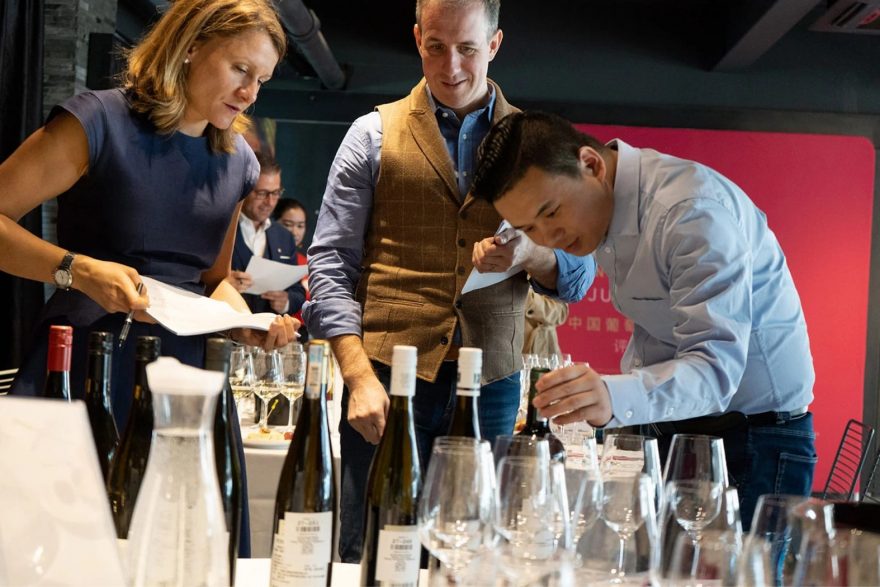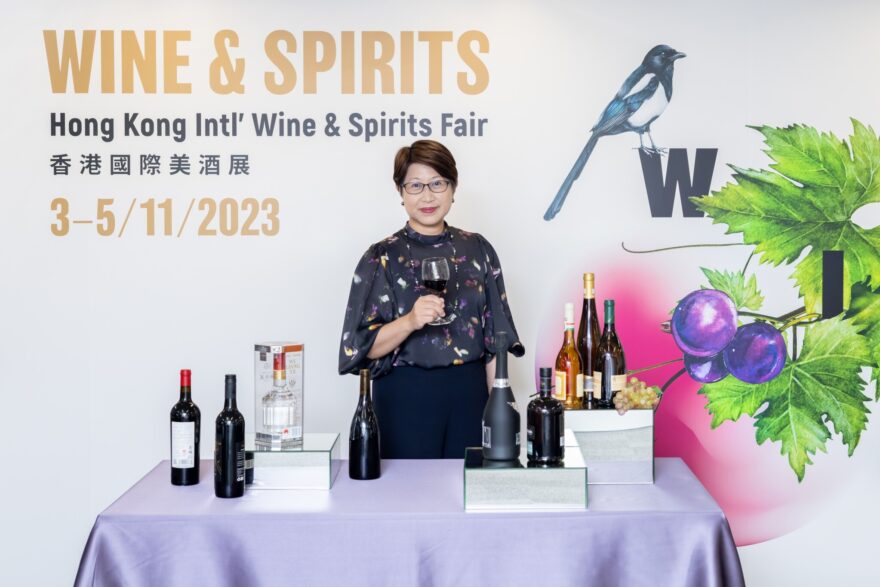South Korean Wine Industry Insider Report and Key Trends

South Korea has come a long way in the past 50 years. Although the wine market has gained a lot of traction compared to traditional choices like soju, consumers in South Korea are still a bit cautious when purchasing wine. But, is this now changing?
Wine drinking in South Korea

Compared to other mature markets in Asia, South Korea is a continuously evolving business landscape for wine. Alcohol is a crucial part of daily life for many South Koreans, and locals drink more hard liquor than anyone, including the Russians, according to Euromonitor. South Korea currently has the highest level of alcohol consumption per capita in the world.
South Korea currently has the highest level of alcohol consumption per capita in the world.
The preferred alcoholic beverage of most Koreans is soju, a rice wine that can also be made with sweet potato, tapioca, and cereal grains. Koreans have many strict customs and habits concerning alcohol, and the strict rules around wine and food pairing are vital and could be very beneficial for wine sales in the future. In 2019 the revenue in the wine market amounted to US$1,671M.
Revenue, in million US$
Source: Statista
True wine aficionados are still rare, but popularity is growing, as shown by the large-scale distribution data, which indicates 2018 sales grew by 20%.
The average consumption per capita is 1.1 L in 2019.
Average Volume per Capita, in litres
Source: Statista
Wine preferences
South Koreans imported 55% red wines, 18% white wines and 27% sparkling wines in 2019.
Revenue from the Still Wine segment amounted to US$1,538m in 2019, whereas the Sparkling Wine segment accounted for US$108m in 2019 with an expected annual growth of 5.3% (CAGR 2019-2023).
The Fortified Wine segment amounted to US$26m in 2019 and is forecasted to grow annually by 6.2% (CAGR 2019-2023).
The younger wine consumers have likely travelled overseas and enjoy trying new wine, including white wines, sparkling wine and dessert wines. In general, indications that consumer demand is becoming more diversified in the South Korean wine market.
In the past, due to highly publicized health benefits of drinking red wine, 63.1 percent of wine imports were made up of red wine. The driving force of the South Korean wine market is young people (20-30 years), of which a high proportion are female. Wine purchases amongst this sector grew by +130% and focused on white wines and half bottles (+30%).
South Korean wine consumers are embracing the notion of food-wine pairing, and as a result, white wine and sparkling wine are experiencing a phase of growth.
Sparkling wine has been the fastest-growing category in recent years and accounted for 18.2 % of wine imports 2018 (compared to only 5.5 percent in 2008).
Source: Korea Trade Information Service Database (KOTIS)
How do the sales of different international wines compare?
Countries like France or Chile have long dominated the South Korean wine market, but the environment is quickly changing.
Chile continues to grow. Imports totaled $46.3 million (11.0 million kilograms) in 2018, up 13.9% from 2017(up 17.3 percent in volume). South Koreans consider Chilean wine good value.
Italian wine imports totaled $34.6 million (5.7 million kilograms) in 2018, up 15.4% since 2017 (up 13.0 percent in volume). Italian wine is esteemed in South Korea, and well known due to the popularity of Italy as a travel destination, and Italian cuisine. Watch for expansion in the sparkling wine market in the coming years.
Wine imports from Spain hit $20.0 million (7.9 million kilograms) in 2018, up 22.2% since 2017 (up 1.9% in volume).
Spanish wine is often brought in bulk and locally bottled.
Australian wine imports totaled $13.0 million (2.7 million kilograms) in 2018, up 5.5% from 2017(up 18.1percent in volume).
Argentina and New Zealand are emerging markets for exceptional white and red wine.
United States wine imports totaled $30.4 million in 2018, up 22.8% since 2017. In terms of volume a total of 3.4 million kilograms, up 10.4%.
Chile remains the leading exporter in terms of volume, with a share of 30%, followed by France (16.5%), Spain (16.36%), Italy (15.87%) and the USA (7%).
Many Koreans consider old world wines (notably France and Italy) superior to new world wines. Therefore, France has remained the leading exporter of wine to Korea. Total imports from France amounted to $79.5 million (5.5 million kilograms) in 2018, up 15.8% from 2017(up 18.1% in volume).
Breakdown of Wine Imports by Origin (Value, 2018)
Source: Korea Trade Information Service Database (KOTIS)
Price per liter of wine exported into South Korea
South Korea’s wine imports from all countries totaled a record-high $244.0 million in 2018, up 15.8 percent from 2017. In terms of import value, France leads the way (32%), then Chile (20%), Italy (15%), USA (13%) and Spain (8%).
Korean wine imports over the last three years have continued to grow by 8.8% p/a and the wine market shows no signs of slowing down. In 2018, Korea’s wine imports in volume amounted to 40.3 million kilograms (up 11.5 percent from 2017).
Price per Unit, in US$
Source: Statista
Korea’s Wine Import Statistics (2018)
| Category | Sparkling | Red Bottled | Red Bulk | White Bottled | White Bulk | Others Bottled | Others Bulk | Grand Total | ||||||||
|---|---|---|---|---|---|---|---|---|---|---|---|---|---|---|---|---|
| Value | Volume | Value | Volume | Value | Volume | Value | Volume | Value | Volume | Value | Volume | Value | Volume | Value | Volume | |
| France | 28,596 | 944,834 | 39,924 | 3,743,066 | 159 | 357 | 8,785 | 698,405 | 1 | 52 | 1,200 | 96,833 | 839 | 12,168 | 79,504 | 5,495,715 |
| Chile | 418 | 80,666 | 39,795 | 8,835,620 | 349 | 240,105 | 5,235 | 1,571,848 | 366 | 240,000 | 117 | 19,324 | 9 | 1,113 | 46,289 | 10,988,676 |
| Italy | 7,846 | 1,646,050 | 19,262 | 2,385,515 | 212 | 64,054 | 6,946 | 1,527,879 | 105 | 38,475 | 213 | 33,948 | 59 | 4,757 | 34,643 | 5,700,678 |
| The U.S. | 514 | 95,274 | 24,584 | 2,479,425 | 144 | 74,463 | 4,357 | 577,295 | 190 | 120,685 | 342 | 15,548 | 268 | 13,017 | 30,399 | 3,375,707 |
| Spain | 2,826 | 819,791 | 12,733 | 3,593,094 | 994 | 1,018,142 | 1,664 | 636,421 | 985 | 1,804,681 | 254 | 35,052 | 33 | 3,567 | 19,489 | 7,910,748 |
| Australia | 524 | 91,505 | 9,522 | 1,746,519 | 667 | 369,067 | 2,039 | 428,948 | 2 | 185 | 143 | 9,460 | 85 | 7,917 | 12,982 | 2,653,601 |
| Others | 3,597 | 1,425,775 | 8,076 | 1,526,769 | 161 | 77,433 | 6,980 | 1,022,943 | 575 | 40,795 | 553 | 59,665 | 752 | 12,996 | 20,694 | 4,166,376 |
| Total | 44,321 | 5,103,895 | 153,896 | 24,310,008 | 2,686 | 1,843,621 | 36,006 | 6,463,739 | 2,224 | 2,244,873 | 2,822 | 269,830 | 2,045 | 55,535 | 244,000 | 40,291,501 |
Source: Korea Trade Information Service Database (KOTIS)
Unit: Value $1,000 USD / Volume Kilogram
Global Comparison – Revenue, in million US$, 2019
| Top 5 | |
|---|---|
| United States | US$49,570m |
| France | US$28,135m |
| China | US$26,834m |
| Italy | US$26,619m |
| United Kingdom | US$24,440m |
| … | |
| South Korea | US$1,671m |
Source: Statista
Korea’s Wine Imports from All Countries
Source: Korea Trade Information Service Database (KOTIS)
*Note: CIF is an export price inclusive of insurance and freight cost to an entry port in Korea.
How is wine distributed?
Korea is abnormal compared to the rest of Asian wine markets, due to the fact that most of the sales of imported wine are attributed to off-trade markets. Koreans prefer to consume alcohol at home while on-trade sales (current value $420m) continue to languish. Aside from the cultural aspect, this is likely the result of high wine costs and the current economic slump.
Wine is still seen as a luxury item in South-Korea, and while the high-prices bars and restaurants may not affect affluent consumers, most Koreans prefer to buy wine from supermarkets like Costco and E-mart rather than frequent high-end wine bars.
As wine knowledge increases to the mainstream consumers, more opportunities will emerge for on-trade sales in the mid-market area will likely emerge.
As wine knowledge increases to the mainstream consumers, more opportunities will emerge for on-trade sales in the mid-market area will likely emerge. Medium price consumers are expected to drive significant growth in the low to medium-priced wine category in the next few years. For now, the on-trade lacks these affordable wine choices, which drive consumers to the off-trade alternative.
South Korean consumers often travel frequently, and they are aware of the high mark-ups in the on-trade compared to international prices. Highly price savvy, they are always seeking better prices in the off trade market.
Out of Home Revenue Share, in percent
Source: Statista
What are current market trends and suggestions in South Korea?

South Koreans have a continuous need for change. There is a local saying “Change everything except your wife and kids.” This is a promising cultural standpoint for the South Korean wine market.
Wine importers should focus on improving millennial consumers’ knowledge about wine and enhancing their appreciation of different varieties of wines. As South Korea progressively becomes more developed and global, the interest in foreign wine increases.
Wine in South Korea is considered a luxury drink and has a higher price point than other alcoholic beverages such as beer and soju.
Wine in South Korea is considered a luxury drink and has a higher price point than other alcoholic beverages such as beer and soju. Intensified competition is driving importers and retailers to offer better prices. If the predicted change to the complicated wine tax system comes through, prices should even-out.
The Winemonitor South Korea Landscapes report indicates that South Koreans are slowly changing their conservative attitudes and views towards wine and becoming more experimental as their curiosity in the sector grows.
Health-conscious individuals are pushing for low alcohol alternatives to heavy spirits and soju which will be highly beneficial for the wine trade in general.
Since July 2016, South Korea has free trade agreements with many wine-producing nations and generally imposes no external tariffs on imported alcohol. This is a big incentive to work with South Korea over its neighbors in Asia-Pacific who impose high tariffs on foreign wine brands.
Prowein named South Korea one of the three most important emerging markets by 2021. Wine drinking has not yet hit mainstream status in South Korea, but there are definite indications for future growth. An increasing concern for health among the general public means there is a higher demand for products with lower alcohol content such as wine and beer.
The developing South Korean wine market is gaining new recognition and increasing annually in sales, making it one of Asia-Pacific’s most attractive prognoses for investment in the future.
Sources:
- https://winenews.it/en/numbers-trends-possibilities-what-if-the-right-target-for-italian-wine-in-asia-was-south-korea_403936/
- https://www.statista.com/outlook/10030000/125/wine/south-korea
- https://www.wineintelligence.com/downloads/south-korea-landscapes-2017/
- https://apps.fas.usda.gov/newgainapi/api/report/downloadreportbyfilename?filename=Wine%20Market%20Report%202019_Seoul%20ATO_Korea%20-%20Republic%20of_2-21-2019.pdf
- https://www.bestwineimporters.com/south-korea/south-korea-wine-imports-top-players-strategies-consumer-trends/
- https://www.drinks-today.com/wine/analysis/insights-south-koreas-wine-market
- https://www.wineintelligence.com/all-change-in-south-korea/
- https://www.euromonitor.com/wine-in-south-korea/report
- https://www.prowein.com/cgi-bin/md_prowein/lib/pub/object/downloadfile.cgi/ProWein_Business_Report_2018_publish.pdf?oid=35116&lang=2&ticket=g_u_e_s_t
- https://italianwinejournal.com/2018/11/13/prowein-business-report-2018-china-increasingly-leader-in-the-market-while-argentina-portugal-and-rsa-challenge-italy-and-france/
- https://lordsofthedrinks.com/2014/02/02/euromonitor-koreans-biggest-consumers-of-hard-liquor-in-the-world/




